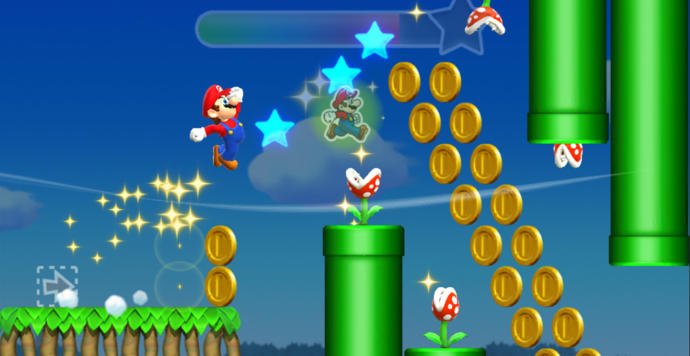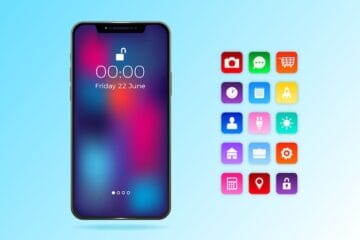
recently as five years ago, Nintendo’s late president, Satoru Iwata, was adamant that Super Mario would never make the leap to smartphones. “If we did this, Nintendo would cease to be Nintendo,” he said in an interview with Nikkei, in 2011. The decision was philosophical rather than economic. The goal of smartphone developers, Iwata had said earlier that year, “is just to gather as much software as possible, because quantity is what makes the money flow.” A game’s artistic quality, he added, “does not matter to them.” But economics apparently won in the end. Before he died, Iwata was forced to acknowledge that the world had changed, and that Nintendo, a company founded in 1889 to make playing cards, must again change with it. In January of 2014, faced with a predicted two-hundred-and-forty-million-dollar annual loss for the company, Iwata asked Mario’s creator, Shigeru Miyamoto, to meet with the character’s other three aging custodians—Takashi Tezuka, Toshihiko Nakago, and the composer Koji Kondo—to explore how Mario might be adapted for the miniature screen.
The resulting game, Super Mario Run, came out on Thursday for the iPhone. As its name implies, it is an auto-runner, a design tradition popularized on smartphones in which the character moves through the environment without provocation, the player’s only real role being to tap the screen to trigger an obstacle-leaping jump. Miyamoto chose the style, he told me, because he wanted subway commuters to be able to play the game one-handed. Even so, Super Mario Run performs the usual Nintendo trick of melding the familiar and new. The Goombas, those shimmying villains of the Mushroom Kingdom, are back, and Mario still dispatches them by hopping on their heads. Each level, as expected, bristles with secrets and obscure routes. Lacking the usual control pad, the game’s designers have broken the monotony of the character’s movements by filling his environment with special blocks, which freeze Mario until you tap him again, or cause him to run in the opposite direction. Nintendo shied away from using the complicated, multifingered gestures that the iPhone is capable of understanding, and that are common in other games, in order to keep a broad appeal. “Those types of interfaces are good for people who know how to use them, but they’re in the minority, I think,” Miyamoto said.
Mario is not the first storied video-game character to seek new fortunes on mobile, but he is a better candidate than most. Since his début as an arcade character, his designers have continually reshaped him to fit new technologies and styles of play, from knitting software to virtual reality, from pugilism to athletics. “Even back in the nineteen-eighties, Tezuka and I were laying the foundation for this approach,” Miyamoto said. “Mario has evolved as our hardware has developed. We train our teams to look for new things to do, to the extent that we often have to rein in younger team members who want to change immovable aspects of Mario’s behavior.” They experimented, for instance, with changing the way that Mario has always ended each level—with a plucky leap onto a flagpole. “We decided it had to stay,” Miyamoto said. “The flagpole is a foundational element.”
While the threat of financial ruin might have lured Mario to the iPhone initially, there were other factors that, for Miyamoto, make this the right time for a reinvention. For years, Nintendo’s consoles—especially its ubiquitous handheld devices, from the Game & Watch toys of the eighties through to the many incarnations of the Game Boy and Nintendo DS—were the first computerized devices that children encountered. They were tactile, approachable, intimate. That position, Miyamoto observed, has been ceded to smartphones, which are now “powerful and stable enough to meet the level of performance we need for our games.”
At the same time, the move to mobile has necessitated a new commercial approach. The most profitable games in the App Store, including Pokémon Go and Clash of Clans, are offered as free downloads with paid extras. Nintendo tried that strategy earlier this year with the launch of Miitomo, a sort of social network with cartoon avatars, in which you earned standing not with scorching quips or dank memes but a flair for fashion and interior decorating. It was a flop. Super Mario Run is taking a bold new, or maybe old, approach: after a free taste of the first few levels, you pay $9.99 to unlock the rest, and that’s it. “With freemium games, the aim is to try to draw regular users in to spend more and more until it becomes compulsive for them,” Miyamoto told me. “I didn’t want to do that. I wanted people to recognize the value of the game and want to pay accordingly.” (The company has already taken flak on social media from customers who are conditioned to see a modest ten-dollar payment as extortionate.)
Miyamoto is sixty-four now, nine years older than Iwata was when he died, and like Iwata he has spent most of his professional life at Nintendo. Both men were game makers before they became executives—Iwata as a programmer, Miyamoto as an artist. “Typically, you go to a programmer and tell them what you, as a designer, want to do,” Miyamoto said. “They then tell you all the reasons why you can’t do that. Mr. Iwata was different. He felt it would be shameful for him to say something was impossible.” Perhaps it is this openness that has allowed Miyamoto not to weary of his chosen field, to be willing to reinvent Mario over and over. “As long as we remain true to the pursuit of creating new and beautiful game-play structures, then our discipline will continue to grow and mature,” he said.
[Source:-The new Yourker]




